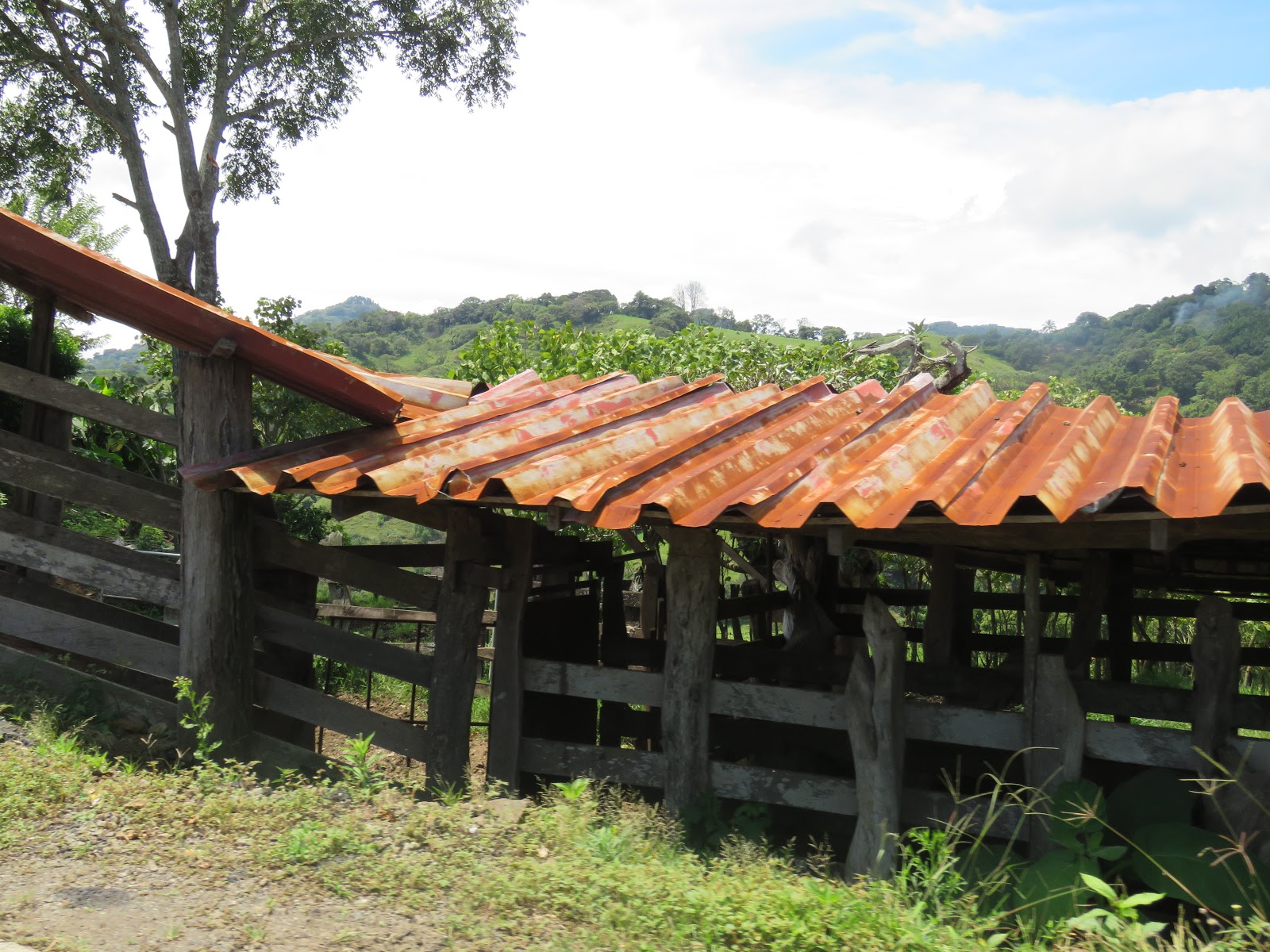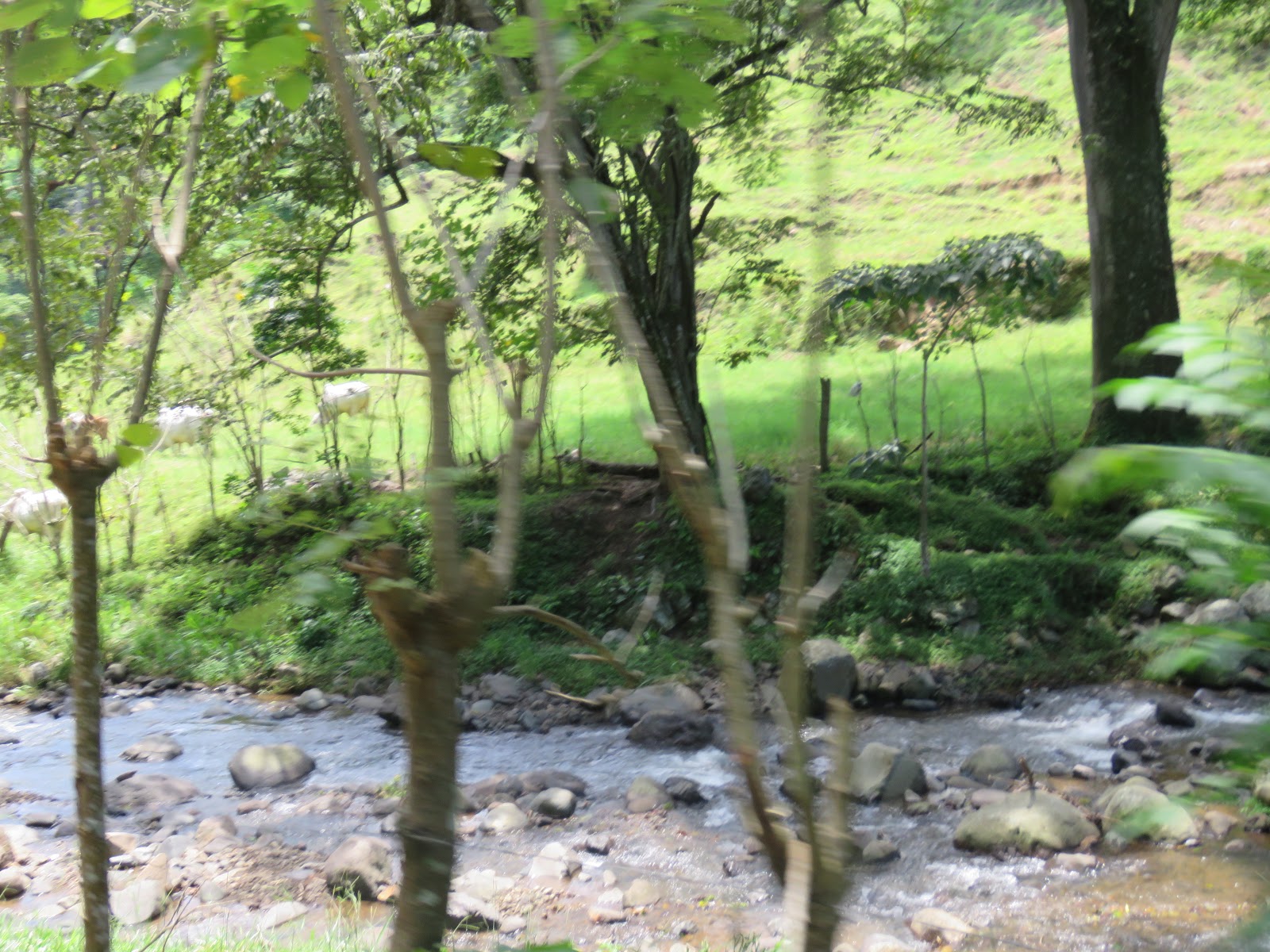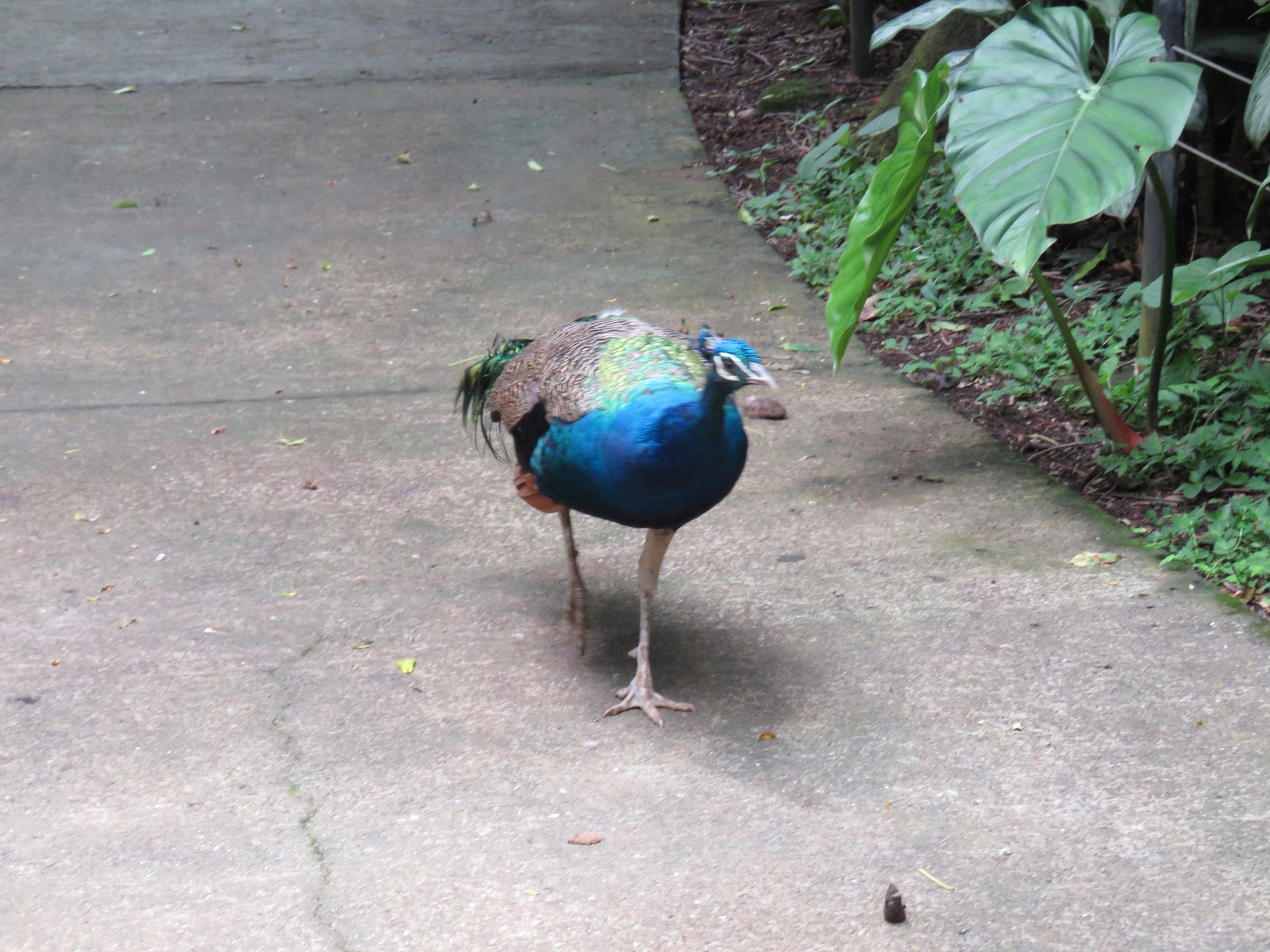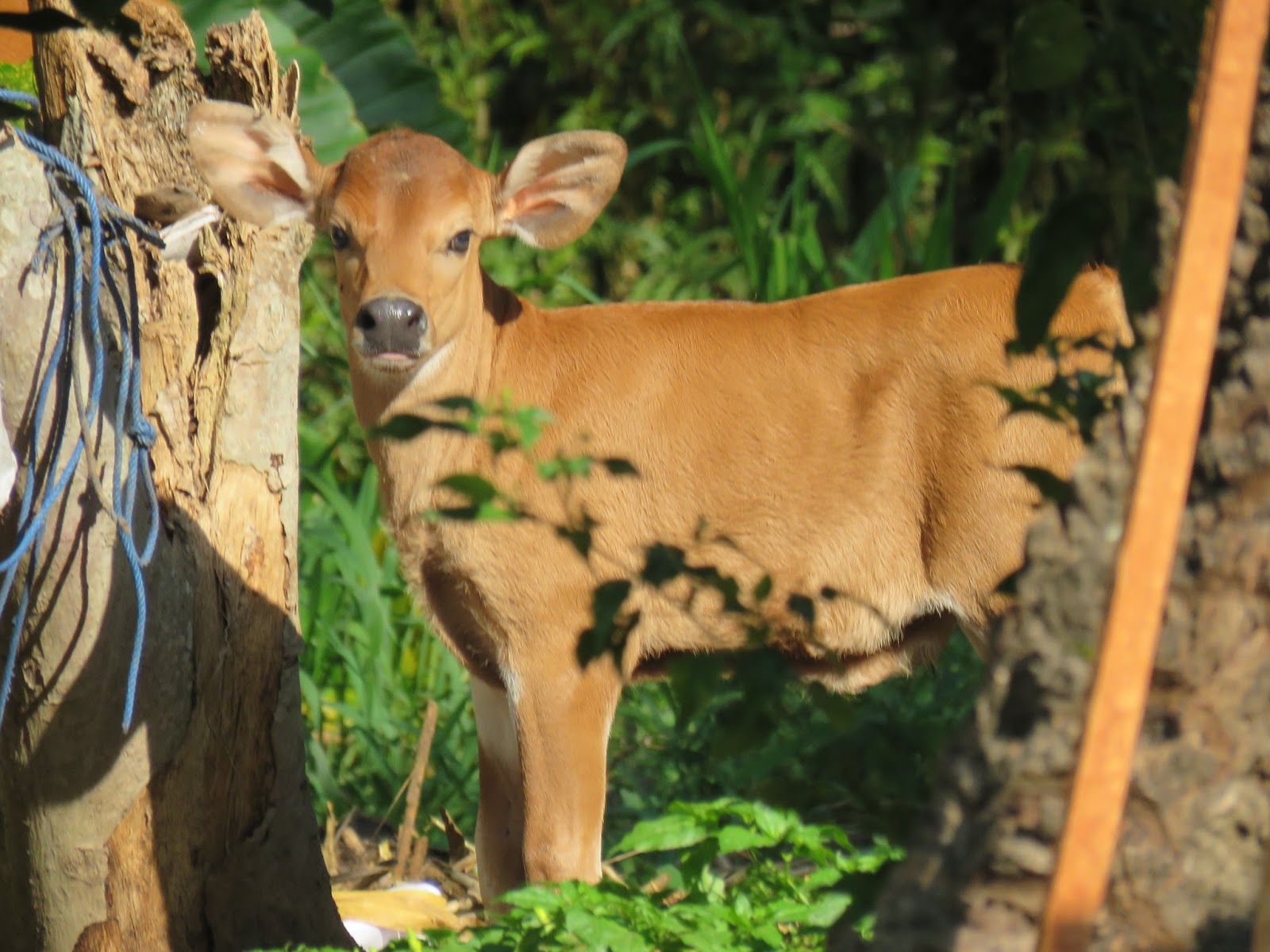 |
| Tom was holding the broom (escoba) made of vegetation at El Toledo Coffee Tour. |
“Sightings from the Veranda in Costa Rica”
 |
| Layers of clouds rolling into the valley. |
As candid as we are regarding how we live our daily lives, we’re also curious about how other retirees may spend their time. Is it so unusual it’s Tuesday at 8:00 am, and we’re sitting in the screening room while Tom is watching last night’s Minnesota Vikings game while I busily peck away at my laptop?
 |
| The items throughout the cafe each had their own story to tell. |
Probably not. We haven’t spent any of our retirement years living near friends and family, which would give us a better perspective of what other retirees may be doing in their spare time, as compared to us.
 |
| The El Toledo Coffee Farm’s coffee is nicely packaged. |
It’s not a desire to emulate the activities of others. More so, it’s simple curiosity, the same curiosity bringing some of you back, again and again, to see “what we’re up to” from one day to the next.
 |
| An old-fashioned cart. |
A significant difference for us, besides living in a new country every few months, is the reality of living without a car at specific points, often without easy access to public transportation. It’s the price we pay for choosing to live in more remote locations.
 |
| Every corner of the area was filled with family treasures. |
Many world travelers with whom we’ve communicated chose to live in apartments and condos in big cities, heading out each day for sightseeing, dining, and tours.
 |
| Gabriel was educating us while we sat at the long table. We were entranced by his manner of speaking and expertise. |
The big city life is far removed from our reality, except on occasions such as our upcoming one-month stay in Buenos Aires beginning on December 23rd (Tom’s birthday). Indeed during those 31 days, we’ll be dining out (no kitchen), using public transportation for tours and sightseeing, and getting out of the hotel room each day to wander about.
 |
| Handmade wood boat. |
Even us, who don’t mind staying in, don’t enjoy sitting in a hotel room all day and night. This period will give us an excellent opportunity to get out walking, something we’ve missed here in the villa in Atenas. The hills are too steep to navigate for an enjoyable leisurely walk.
 |
| The coffee cafe, with its cultural decor, was fascinating. |
Luckily, in the weeks we’ve had a car (every other at this point), we’ve chosen various types of sightseeing, all of which have required extensive walking. Although these “hikes” aren’t frequent enough to build the level of fitness we’d like to restore, at least these tours, thus far, have kept us on the move.
 |
| The clutter was oddly appealing. |
As for a day like today…once the football game ends and I’ve uploaded the post, most likely, we’ll spend time out by the pool. The past three days have been cloudy and rainy by the time I’ve finished the post. We’re both anxious to get our token 20 to 30 minutes of sun time and spend time in the pool. Rain or shine, we spend the better part of each day on the veranda with the roof protecting us from the rain.
 |
| Once we embarked on the tour, we entered this working area. |
We discuss our dreams for the future during those pool times, where we’d like to go after revisiting the US in 2019. At this point, we’re tossing around some ideas, considering which countries we’ve yet to visit and those we long to see.
 |
| Gabriel was explaining the use of the space. |
Our typical day-to-day lives may not be too different than yours, except for a few factors; we don’t do any household repairs and maintenance; we don’t do yard work, and we don’t go to Home Depot.
 |
| Wine-making area. |
We don’t “jump in the car” to drive short distances to visit with friends and family; we rarely go to the doctor; we don’t go to Costco for a fun shopping trip loading up large quantities of food and supplies; we don’t head over the Walgreen’s or CVS for a few items, using these little rewards cards for discounts hanging on our keyring.
 |
| Drying racks for the coffee beans. |
Then again, most peculiarly…we don’t have a keyring! How odd is that?
Have a pleasant day!
Photo from one year ago today, September 12, 2016:
 |
| When we watched this activity on the river, we had no idea what was transpiring until we saw they were cleaning the carcass of a cow in the river. Yikes! For more photos, please click here. |









































































































